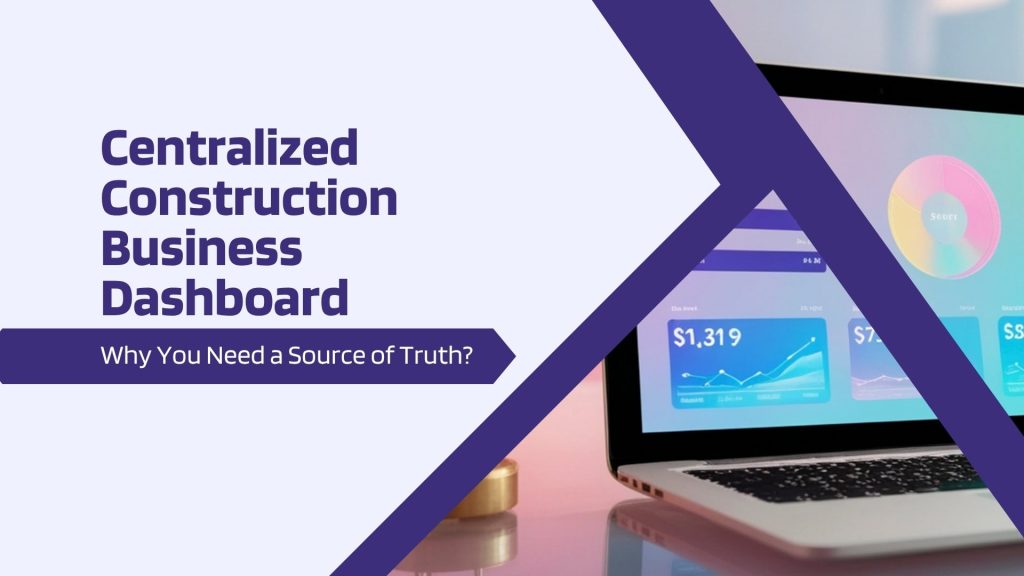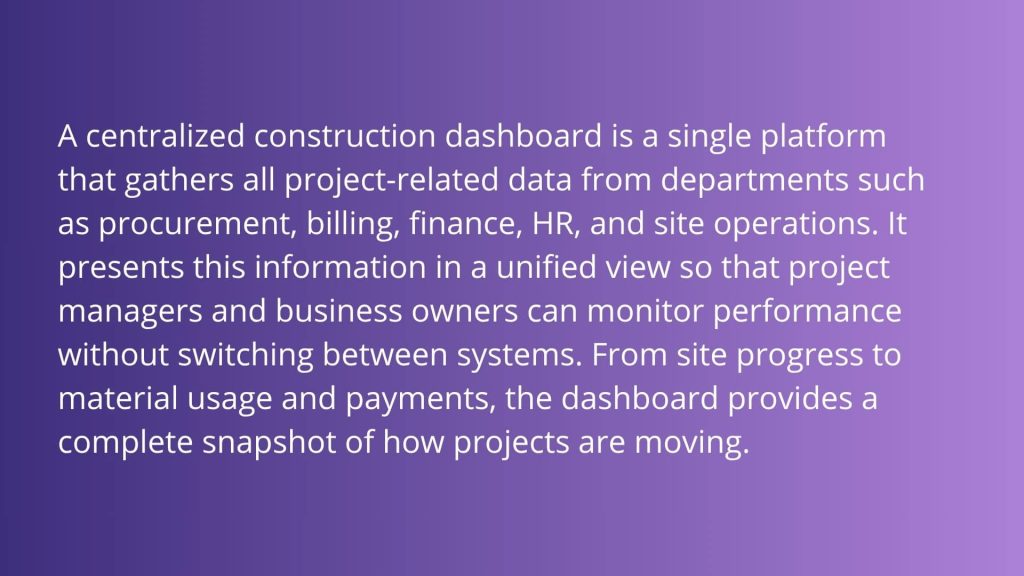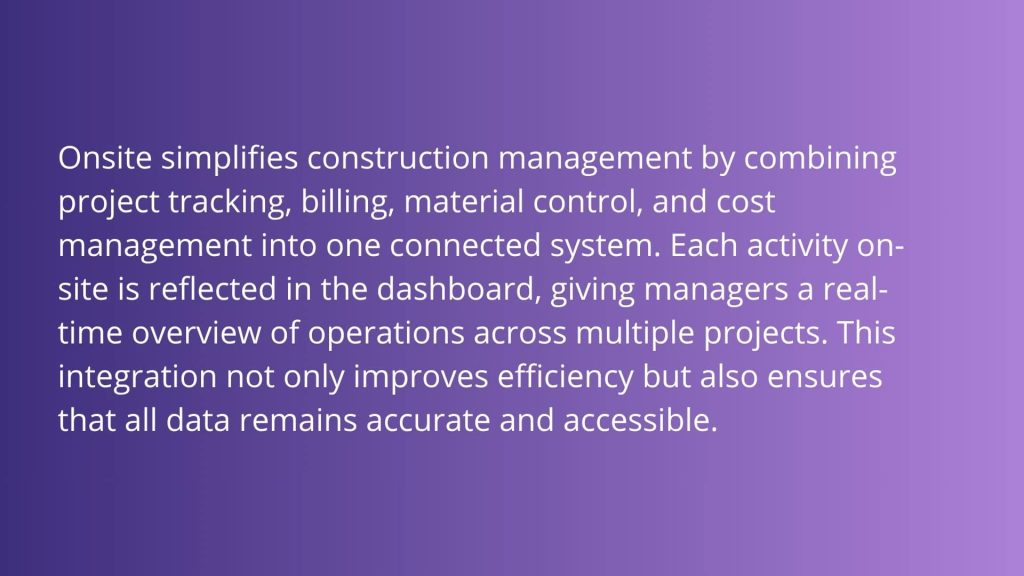
There is a constant flow of information on construction sites. Teams send and receive progress reports, requests for materials, financial updates, and site data every day. Coordination degrades when these facts are spread out over spreadsheets or handled by different programs. A unified construction business dashboard fixes this by bringing all project data together in one location. This gives contractors clear, real-time visibility and a single, trusted source of truth.
What Is a Centralized Construction Business Dashboard?

Benefits of a Centralized Construction Business Dashboard
1. Real-Time Visibility
You can check real-time updates with people working on a site. Your supervisors or managers can just update their progress in the software itself with messages, photos, and progress entry. You can track anything, task completion, labor deployment, or equipment usage. Everything you need to know can be presented to you in the single dashboard if you choose the right software. Onsite is one of those software that will let you have transparent and real-time visibility of your construction business dashboard.
2. Stronger Financial Oversight
On a single dashboard, you can get reports of your company’s financial status. Be it about the expense of material, labor, or petty cash, everything can be clearly visible with automatically calculated amounts. It saves a lot of time and effort.
3. Streamlined Communication
If you share a dashboard with your business partners or stakeholders, it becomes easier to come to a common understanding. It helps in avoiding disputes and makes the conversation even easier than ever before. You all can access the same verified information and can make decisions easily.
4. Time-Saving Reports
Time is everything in construction. It may take a person some time to generate reports of salary and attendance but with construction management software or tools, a report can be easily generated. Quickly generated reports allow project managers and business owners to get instant insights into daily labor deployment, costs, absences, and site productivity, without waiting for end-of-week summaries. You just need to select the dates, be it a week, a month or a year, you will get reports generated at hand. These reports are clear and easily shareable.
5. Clear Accountability
Every action and approval is recorded within the software which gives you clarity on the activities that have been happening by whom, it lets you know who is accountable for what. Since, with the help of software, you can assign tasks, you can provide clear responsibility and accountability to the workers at site. This makes it easy to review actions and responsibilities at any stage.
How Onsite Serves as the Centralized Construction Business Dashboard?

Conclusion
With Onsite, contractors can run their whole business from one spot. The software puts project tracking, billing, material management, and cost control all in one place. Every update made on-site is seen right away, which makes it easy for managers to keep track of several projects at once. This simpler method saves time, cuts down on manual work, and makes sure that every aspect is the same throughout the company.
FAQs
1. What is a Centralized Construction Business Dashboard?
It is a single system that gathers all project information—such as progress updates, financial data, material records, and communication—into one organized platform. This helps contractors track and manage operations in real time.
2. Why do construction companies need a centralized dashboard?
Construction work involves many teams and data points. A centralized dashboard keeps information accurate, avoids confusion, and ensures everyone accesses the same verified records.
3. How does Onsite serve as a Centralized Construction Business Dashboard?
Onsite brings project tracking, billing, material management, and cost control into one platform. Managers can see live updates from sites and make informed decisions quickly.
4. Can a centralized dashboard improve financial management?
Yes. It offers clear visibility into material expenses, labor payments, and overall budgets, helping managers maintain financial control across all projects.



